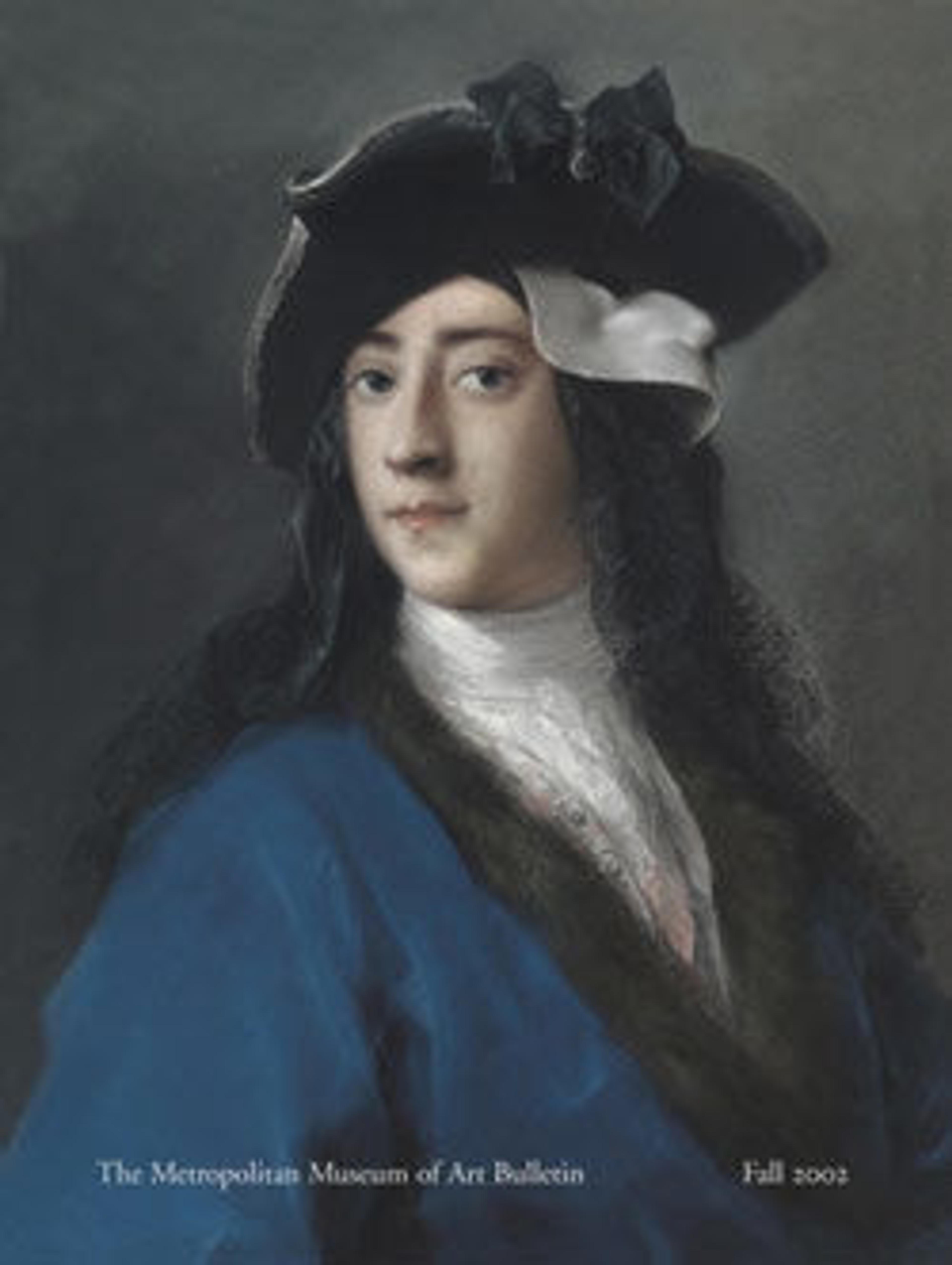Posthumous Portrait of a Queen as Parvati
Kings and queens were believed to have a divine origin, being human incarnations of gods on earth. It was thought that they were reunited at death with the deities from whom they originated. Posthumous commemorative royal portraits such as this one celebrate that moment coinciding with death when the temporal ruler is reintegrated with the original deity. In this case, an as yet unidentified historical queen is depicted as the Hindu goddess Parvati, the consort of Shiva.
She stands on Shiva's vehicle, the bull Nandi, and is flanked by her two children. Standing in an unusual yogic pose is Ganesha, the potbellied, elephant-headed god who controls obstacles; seated is Karttikeya, the god of war and general of the army of the gods.
She stands on Shiva's vehicle, the bull Nandi, and is flanked by her two children. Standing in an unusual yogic pose is Ganesha, the potbellied, elephant-headed god who controls obstacles; seated is Karttikeya, the god of war and general of the army of the gods.
Artwork Details
- Title: Posthumous Portrait of a Queen as Parvati
- Period: Eastern Javanese period
- Date: 14th century
- Culture: Indonesia (Java)
- Medium: Andesite
- Dimensions: H. 80 in. (203.2 cm); W. 3 ft. 3 in. (99.1 cm)
- Classification: Sculpture
- Credit Line: Purchase, 2000 Benefit Fund, 2001
- Object Number: 2001.407
- Curatorial Department: Asian Art
Audio
7915. Posthumous Portrait of a Queen as Parvati
0:00
0:00
We're sorry, the transcript for this audio track is not available at this time. Please email info@metmuseum.org to request a transcript for this track.
More Artwork
Research Resources
The Met provides unparalleled resources for research and welcomes an international community of students and scholars. The Met's Open Access API is where creators and researchers can connect to the The Met collection. Open Access data and public domain images are available for unrestricted commercial and noncommercial use without permission or fee.
To request images under copyright and other restrictions, please use this Image Request form.
Feedback
We continue to research and examine historical and cultural context for objects in The Met collection. If you have comments or questions about this object record, please contact us using the form below. The Museum looks forward to receiving your comments.
